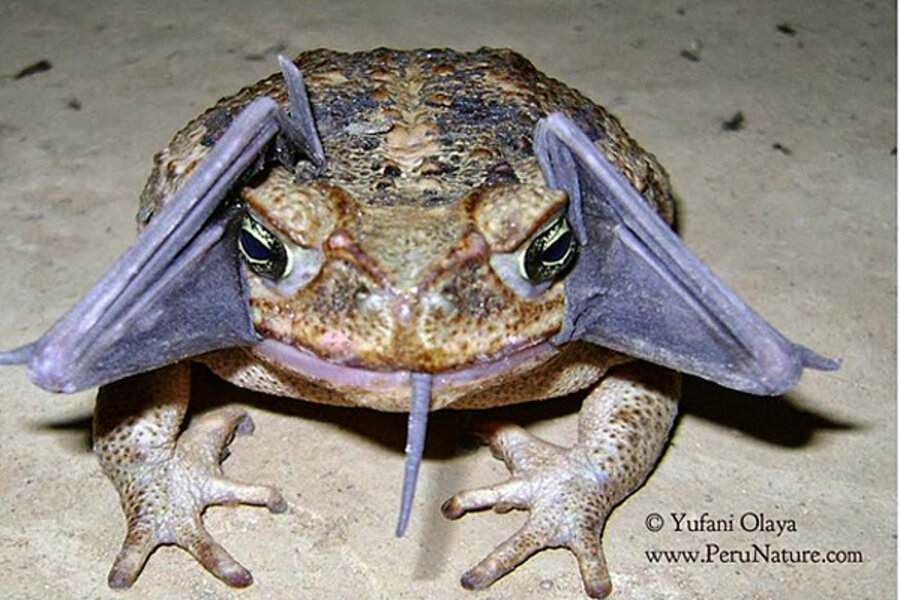Toad noms on bat, poses for photo
Loading...
What's the matter, bat got your tongue?
A park ranger in northwest Peru got a surprise when he encountered a toad with something in its mouth. This something happened to be a bat.
Ranger Yufani Olaya snapped a photograph of the bat-chomping toad in the Cerros de Amotape National Park, where he works. Olaya shared the photograph with biologist Phil Torres, who works at the Tambopata Research Center, a scientific outpost in the Peruvian Amazon. This is probably the first photographed record of a cane toad eating a bat, Torres said.
The bat in the photograph is likely a type of free-tailed bat, perhaps a velvety free-tailed bat (Molossus molossus), which is common throughout northern South America. In another instance, a different type of toad was observed eating a free-tailed bat in Brazil, Torres told LiveScience. [5 Strange Sightings in the Peruvian Amazon]
Cane toads are opportunistic feeders and well known for being voracious eaters — that trait has allowed them to be successful as an invasive species in places like Australia, Torres said. But it's a rare occurrence to find one eating a bat, which usually flies far from the ground where the amphibians hop.
In this case, the bat appeared literally to fly into the toad's mouth, Torres wrote on his blog. As Olaya told him, "out of nowhere the bat just flew directly into the mouth of the toad, which almost seemed to be sitting with its mouth wide open." The bat was likely foraging for insects close to the ground, Torres said, and the toad got lucky. Sorta.
Toads have been known to eat bats, although usually only when they happen upon one opportunistically, said Rachel Page, a researcher at the Smithsonian Tropical Research Institute in Panama who wasn't involved in the present finding. However, some toads and frogs will systematically wait outside of caves and catch bats as they emerge from the roost at night, Page wrote to LiveScience in an email. This has been seen in Australia, she said.
However, bats are not always the victims in this animal-eat-animal world — certain species, like fringe-lipped bats (Trachops cirrhosus), have been known to eat toads.
"My guess is that it is much more common the other way around – lots of bats will hunt frogs, going for the rustling sounds the frogs make as they move through the leaf litter, and some bats [like fringe-lipped bats] even go for the calls male frogs make to attract mates," Page said.
The story has a happy ending, at least for the bat. After failing to swallow the bat whole, the toad gave up, and the bat — still alive — flew away, Torres said.
Email Douglas Main or follow him on Twitter or Google+. Follow us @livescience, Facebook or Google+. Article originally on LiveScience.
- 40 Freaky Frog Photos
- In Photos: The World's Freakiest Looking Animals
- Camera Trapped: Wonderful and Weird Wildlife Around the World
Copyright 2013 LiveScience, a TechMediaNetwork company. All rights reserved. This material may not be published, broadcast, rewritten or redistributed.







